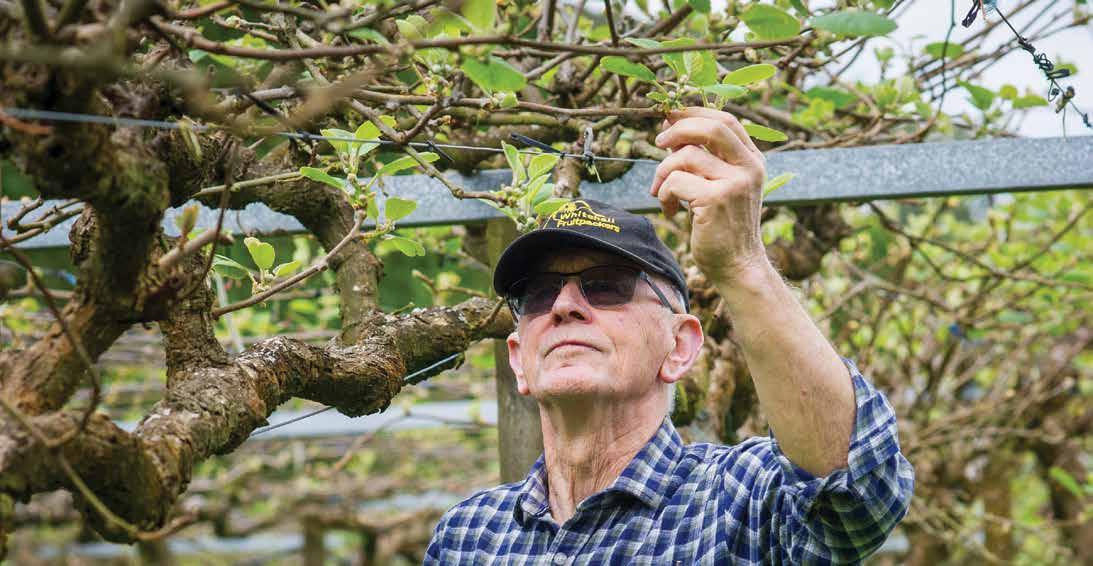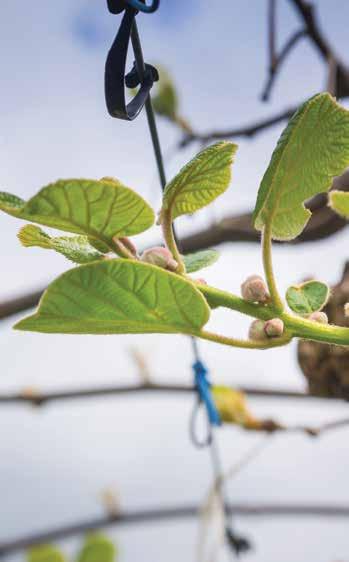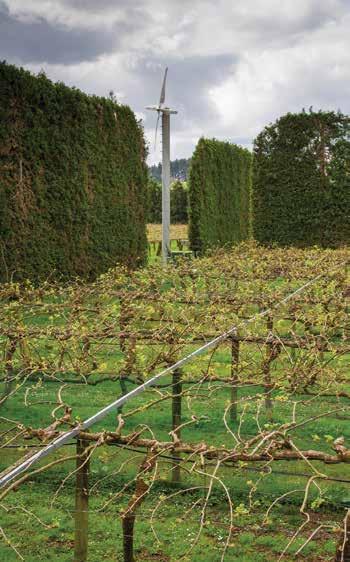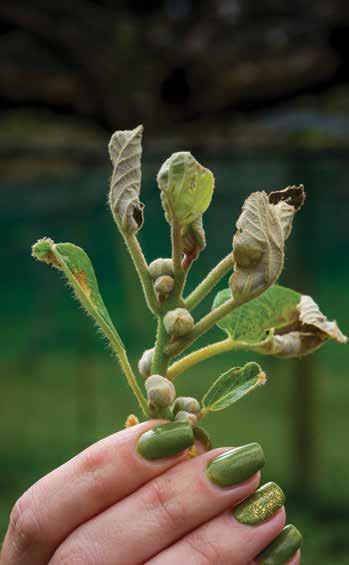
3 minute read
Orchards brave coldest ‘snap’ since records began
Mark Gardiner inspecting kiwifruit buds for frost damage
Whitehall Fruitpackers was one of the more fortunate orchards to have come out relatively unscathed from October’s polar blast. The orchard is still assessing damage to its crops, but managing director, Mark Gardiner, says preparation, a late season and sheer dumb luck seems to have limited their overall crop loss.
Geoff Lewis
Based in the Waikato, the orchard consists of 30 blocks of kiwifruit totalling 250 canopy hectares. In a usual year, these produce 2.5 million trays of Hayward Green and G3 Zespri SunGold which are processed at its Karapiro packhouse.
While the Waikato gets frosts, and an early chill can be good for kiwifruit bud burst, the 7 October event was the coldest night and early morning experienced in the area since records began in 1972, Mark says. “We didn’t come out unscathed. We have lost a lot of crop. It was an ‘advective frost’ – [meaning] there is no inversion layer with warmer air on top. We didn’t expect negative three temperatures in October. It caught a lot of growers out.” Up to that point the season had provided a relatively warm and wet winter and a slow spring with cold patches. A mitigating factor was a late season. Bud burst in the gold kiwifruit variety was only just beginning a couple of weeks late, meaning there wasn’t developing fruit for the ice to destroy.

Healthy kiwifruit buds Views of Whitehall orchard Frost-burned kiwifruit buds


While the Antarctic’s icy fingers roused a small squadron of helicopters to help desperate growers, the kiwifruit vines at Whitehall’s home territory were prepared for frost with extensive shelter-belting, 10m swivelling fans and available water. The diesel-powered fans are thermostatically controlled and once the temperature drops below the designated level they jump into action. Having a good water supply is essential – not just for irrigation but also for frost protection. A fine mist is sprayed over the vines which helps to ensure the temperature does not go below freezing. “The late-developing season has saved us,” Mark says. “We have a limited amount of water for frost protection, we covered all the gold and half of the green [kiwifruit crop]. Losses vary depending on the variety and its yield.”
Mark and his team inspected the damage in mid-October. The crop assessment team were challenged with working their way through each block, assessing what remained viable and which buds were too frost-burned.
Family owned and run, Whitehall Fruitpackers has been operating for more than 45 years, with Robyn and Mark Gardiner and their sons Paul and Ben and daughter Kristin all involved. With kiwifruit business being so labour intensive, Whitehall employs up to 300 workers in peak season and a core group of casuals.
Approximately 90 percent of its production goes to export through Zespri, while the remainder heads to Australia and the local New Zealand market under its in-house Whitehall Fruitpackers brand. Last year, Whitehall Fruitpackers invested $7 million in automating its packhouse, a move which saw the introduction of optical grading and robotic stacking. There are plans in motion to pack the new red kiwifruit variety in future too.
Online Orchard Irrigation Supplies
Call our experts 0800 130 905










